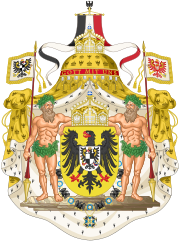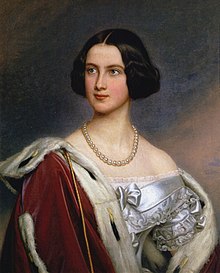
The House of Wittelsbach is a former Bavarian dynasty, with branches that have ruled over territories including the Electorate of Bavaria, the Electoral Palatinate, the Electorate of Cologne, Holland, Zeeland, Sweden, Denmark, Norway, Hungary, Bohemia, and Greece. Their ancestral lands of Bavaria and the Palatinate were prince-electorates, and the family had three of its members elected emperors and kings of the Holy Roman Empire. They ruled over the Kingdom of Bavaria which was created in 1805 and continued to exist until 1918.
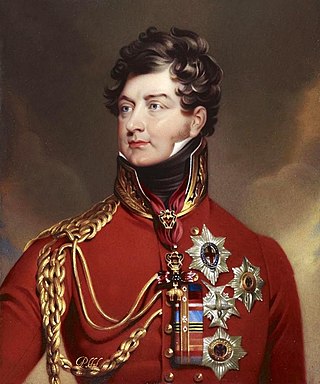
A prince regent or princess regent is a prince or princess who, due to their position in the line of succession, rules a monarchy as regent in the stead of a monarch, e.g., as a result of the sovereign's incapacity or absence.
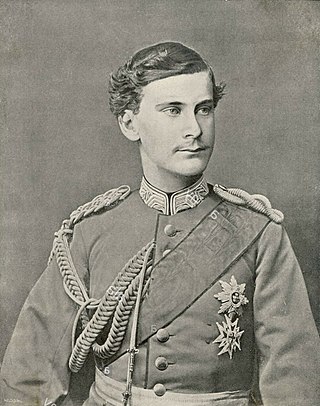
Otto was King of Bavaria from 1886 until 1913. However, he never actively ruled because of alleged severe mental illness. His uncle, Luitpold, and his cousin, Ludwig, served as regents. Ludwig deposed him in 1913, a day after the legislature passed a law allowing him to do so, and became king in his own right as Ludwig III.

Maximilian II reigned as King of Bavaria between 1848 and 1864.

Ludwig III was the last King of Bavaria, reigning from 1913 to 1918. Initially, he served in the Bavarian military as a lieutenant and went on to hold the rank of Oberleutnant during the Austro-Prussian War. He entered politics at the age of 18 becoming a member of the Bavarian parliament and was a keen participant in politics, supporting electoral reforms. Later in life, he served as regent and de facto head of state from 1912 to 1913, ruling for his cousin, Otto. After the Bavarian parliament passed a law allowing him to do so, Ludwig deposed Otto and assumed the throne for himself. He led Bavaria during World War I. His short reign was seen as championing conservative causes and he was influenced by the Catholic encyclical Rerum novarum.

Rupprecht, Crown Prince of Bavaria, Duke of Bavaria, Franconia and in Swabia, Count Palatine by the Rhine, was the last heir apparent to the Bavarian throne. During the first half of World War I, he commanded the 6th Army on the Western Front. From August 1916, he commanded Army Group Rupprecht of Bavaria, which occupied the sector of the front opposite the British Expeditionary Force.

The King of Bavaria was a title held by the hereditary Wittelsbach rulers of Bavaria in the state known as the Kingdom of Bavaria from 1805 until 1918, when the kingdom was abolished. It was the second time Bavaria was a kingdom, almost a thousand years after the short-lived Carolingian kingdom of Bavaria.
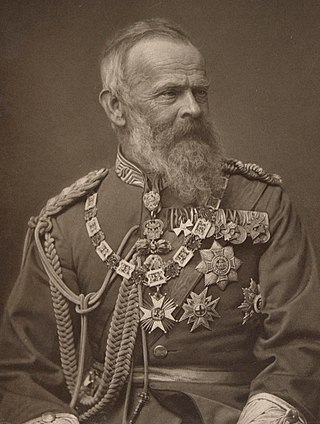
Luitpold Karl Joseph Wilhelm Ludwig, Prince Regent of Bavaria, was the de facto ruler of Bavaria from 1886 to 1912, as regent for his nephews, King Ludwig II and King Otto. His regency arose due to his nephews' mental incapacity.
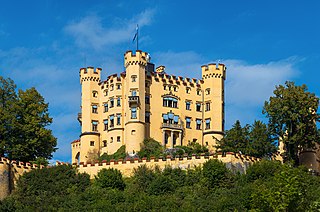
Hohenschwangau Castle is a 19th-century palace in southern Germany. It was built by King Maximilian II of Bavaria, and was the childhood residence of his son, King Ludwig II of Bavaria. It is located in the German village of Hohenschwangau near the town of Füssen, part of the county of Ostallgäu in southwestern Bavaria, Germany, very close to the border with Austria.

The Kingdom of Bavaria was a German state that succeeded the former Electorate of Bavaria in 1806 and continued to exist until 1918. With the unification of Germany into the German Empire in 1871, the kingdom became a federated state of the new empire and was second in size, power, and wealth only to the leading state, the Kingdom of Prussia.

Maria Theresa Henriette Dorothea of Austria-Este was the last Queen of Bavaria. She was the only child of Archduke Ferdinand Karl Viktor of Austria-Este and Archduchess Elisabeth Franziska of Austria.

Prince Ludwig Ferdinand Maria Karl Heinrich Adalbert Franz Philipp Andreas Konstantin of Bavaria was a member of the Bavarian House of Wittelsbach and a General of Cavalry. Following his marriage to Infanta María de la Paz of Spain, he was also created an Infante of Spain.

Infanta María de la Paz of Spain was a Spanish infanta. A daughter of Queen Isabella II, she married her cousin Prince Ludwig Ferdinand of Bavaria. She lived the rest of her life in Germany, dedicating her time to her family, charity work and writing poetry. She wrote a book of memoirs: Through Four Revolutions: 1862–1933.

Therese Charlotte Luise of Saxony-Hildburghausen was queen of Bavaria as the wife of King Ludwig I. Oktoberfest was created in honour of their wedding and is still celebrated annually on Theresienwiese in Munich. Therese was popular amongst the people of Bavaria, and was heavily involved in her husband's politics, as well as her own charity work.

Prince Adalbert Wilhelm Georg Ludwig of Bavaria was the ninth child and fourth son of Ludwig I of Bavaria and Therese of Saxe-Hildburghausen.

Ludwig II, also called the Swan King or the Fairy Tale King, was King of Bavaria from 1864 until his death in 1886. He also held the titles of Count Palatine of the Rhine, Duke of Bavaria, Duke of Franconia, and Duke in Swabia. Outside Germany, he is at times called "the Mad King" or Mad King Ludwig.

Ludwig II is a 2012 German-Austrian historical film directed by Peter Sehr and Marie Noëlle, starring Sabin Tambrea as the younger Bavarian King Ludwig II and Sebastian Schipper as the king in his later years.
The Kaiserbrief, is the letter to the German Federal princes signed by North German Chancellor Otto von Bismarck on 27 November 1870 and Bavarian King Ludwig II on 30 November 1870. Ludwig's uncle, Prince Luitpold of Bavaria, the later Prince Regent (1886–1912), on 3 December 1870 personally handed over the Imperial Letter to the Prussian king.
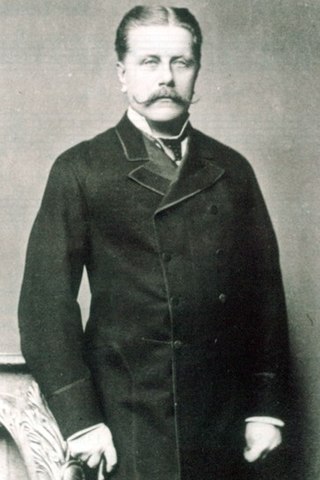
Maximilian Carl Theodor, Count von Holnstein aus Bayern was a German nobleman who was a playmate of princes Ludwig and Otto, and friend of Ludwig on his accession as Ludwig II. Count Maximilian brought Ludwig's "Kaiserbrief" to Otto von Bismarck.

